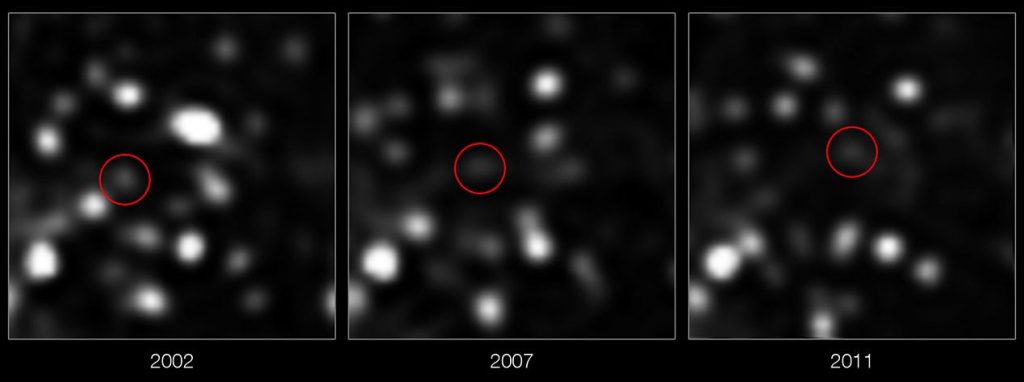Watching stuff fall into a black hole
It’s commonly known amongst astronomers, if not so much amongst the general public, that if you head outside and look up at the constellation of Sagittarius, you’ll be directly facing a vast black hole, millions of times more massive than the Sun. This beast dwells at the very core of the Milky Way galaxy, stirring up all the material for light years around and devouring anything that approaches too directly. It’s hard to see because there are such vast clouds of dust and gas in the way, but a team of European Space Observatory (ESO) astronomers observing patiently with sophisticated infra-red cameras managed to photograph a handful of stars following extremely tight, fast orbits around an empty space. Since only a super-massive black hole could whip entire stars around in such rapid, violent orbits, that was proof that the monster was real, and at home in our galaxy.

